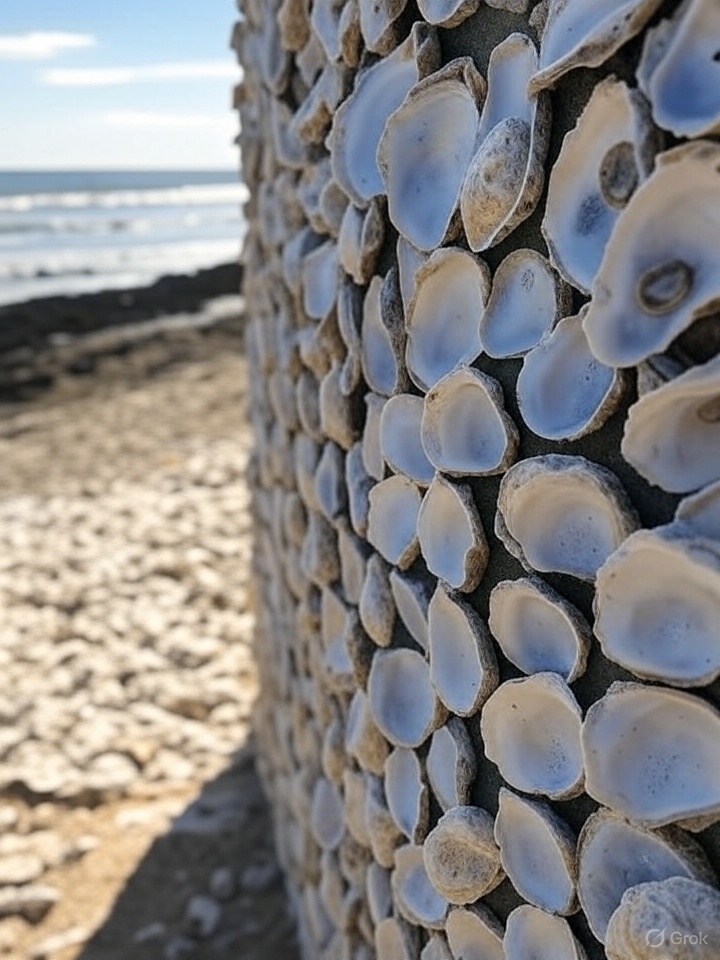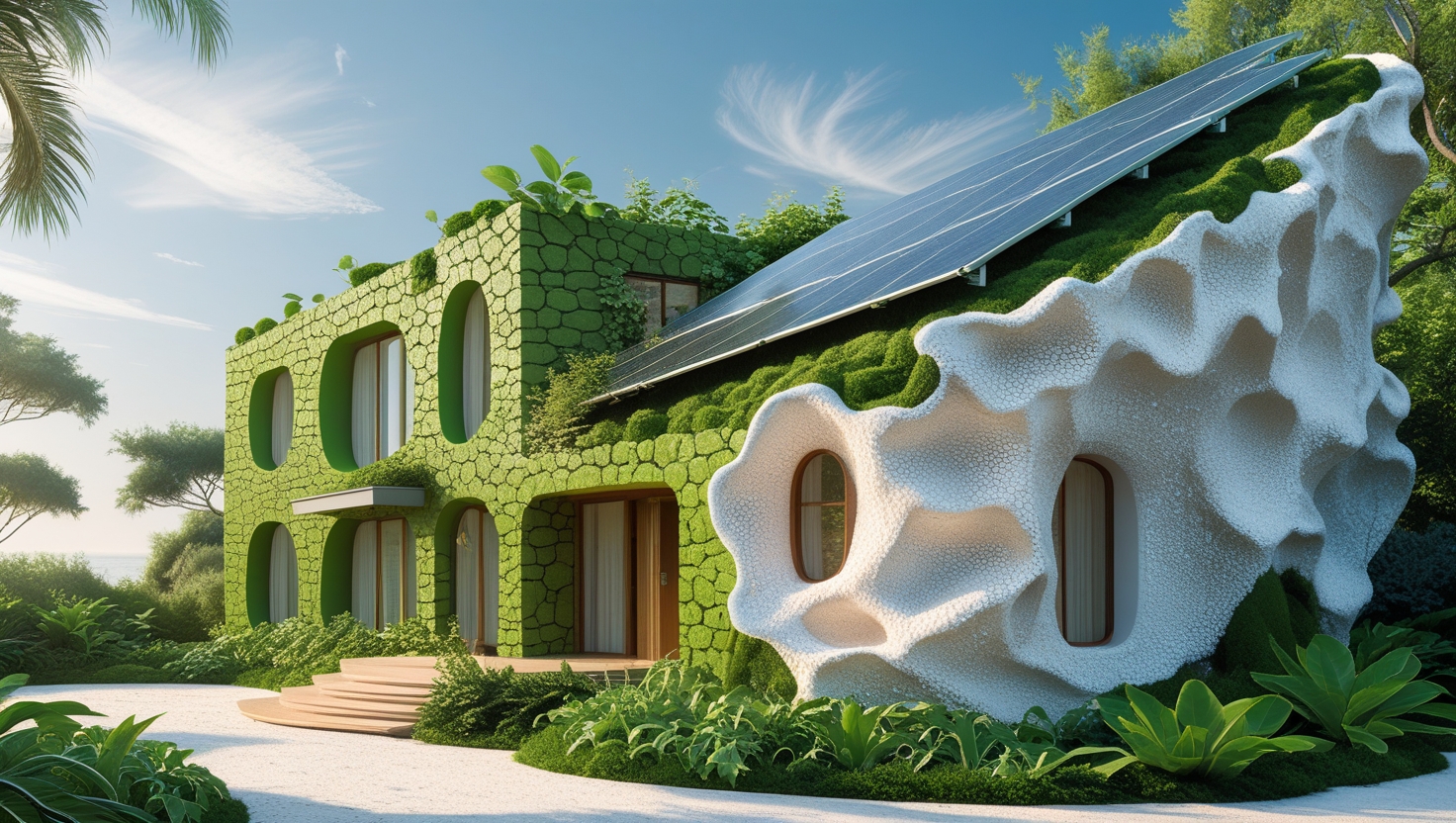Algae bricks construction is no longer science fiction—it’s a game-changer for DIY builders and eco-conscious homeowners. Paired with oyster-shell walls, these innovative materials are making sustainable housing not just possible, but affordable. This guide walks you through everything you need to know, from science to sourcing, and step-by-step instructions to build your own low-carbon future.
Why We Need Algae Bricks Construction Now
Traditional construction methods are choking our planet. Cement alone is responsible for nearly 8% of all global CO₂ emissions. Add in the hidden costs—deforestation, mining, toxic runoff—and it becomes clear why change is urgent.
Many believe green alternatives are more expensive. But that’s outdated thinking. As algae bricks construction technology matures, the cost gap is shrinking. In fact, bio-based materials are starting to match or even beat concrete on price when produced at scale. Yet even in leading green nations like the Netherlands, only 3% of building materials are currently bio-based. The opportunity is huge.
Algae Bricks Construction: The Science and Sustainability
How Algae Bricks Are Made
Algae bricks are made using microalgae cultivated in bioreactors. These fast-growing organisms are harvested, dried, and mixed with sand and a natural binder such as lime or clay. The mixture is then compressed into molds and left to cure.

The process mimics natural coral reef formation, creating a durable structure without energy-intensive kilns or chemical additives. You can even grow your own algae at home, making small-scale production accessible.
Environmental Impact
Unlike concrete, which emits CO₂, algae bricks construction can actively sequester carbon. One square meter of algae brick wall can store several kilograms of CO₂ over its lifespan. They also regulate humidity, resist mold, and improve indoor air quality.
Verified studies have shown algae bricks can reduce embodied carbon by up to 60%. That’s not just eco-friendly—that’s revolutionary.
Performance and Scalability
These bricks are surprisingly tough. They perform well under pressure, resist fire, and offer natural insulation. Thermal regulation is built-in thanks to the breathable matrix.
Scalability is another advantage. Algae can double in volume every 4–6 hours, meaning raw material production is virtually limitless. Community algae farms in Australia and the US are already supplying regional building projects.
Oyster-Shell Walls: From Marine Waste to Building Strength
The Oyster Shell Advantage
Discarded oyster shells are often treated as waste. But in sustainable construction, they’re gold. Rich in calcium carbonate, they behave much like limestone when processed. When combined with lime or clay, they form a durable, low-emission alternative to brick or concrete.

By repurposing seafood industry byproducts, you’re tapping into the circular economy. That’s sustainability in action.
Environmental and Structural Benefits
Oyster-shell walls excel in humid and coastal environments. Their salt-resistance and thermal properties make them perfect for homes near the sea. Sunlight bounces off their reflective surfaces, keeping interiors cooler and reducing air-conditioning needs.
In fact, studies show oyster-shell walls can reduce energy use for cooling by up to 15% in warm climates.
Aesthetic and Cultural Value
Beyond performance, oyster-shell walls offer visual richness. Their textures and color variations bring a natural, coastal charm that’s hard to replicate.
In southern China’s Pearl River Delta, homes with oyster-shell facades have stood for generations. Now, modern architecture is rediscovering their beauty—and utility.
DIY Guide: Algae Bricks Construction and Oyster-Shell Walls at Home
Sourcing Materials
- Microalgae: Purchase from lab suppliers or grow your own using a bioreactor made from glass tubing and aquarium parts.
- Oyster Shells: Clean and sun-dry shells collected from restaurants or seafood markets.
- Binders: Use hydrated lime, clay, or low-carbon cement mixes.
Always sanitize marine waste to avoid bacteria or mold. Soaking in vinegar and sun-curing works well.
Making Algae Bricks at Home
- Cultivate Algae: Use sunlight, water, and nutrients to grow algae in clear containers.
- Dry Biomass: Once thick, filter and dry the algae paste.
- Mix Ingredients: Combine algae, sand, and binder until you get a paste-like texture.
- Mold & Cure: Press into brick molds and leave under sun or in a dry ventilated area for 2–3 days.
Add fiber like jute or hemp for extra strength. Biochar can improve insulation and carbon retention.
Building Oyster-Shell Walls
- Clean & Grind Shells: Remove all organic matter and crush into small fragments.
- Mix Mortar: Blend crushed shells with lime and water. Optional: add clay for texture.
- Lay the Wall: Apply in layers, either as mortar between other bricks or stacked alone.
- Seal if Needed: For exterior walls, use natural sealants like linseed oil or beeswax.
Tip: Use a metal mesh for reinforcement if the wall is taller than 2 meters.
Algae Bricks Construction in Action: Real-World Examples
Prometheus Materials (USA)
Prometheus is piloting algae brick houses and schools in Colorado. The bricks absorb CO₂ during curing, and early tests show excellent insulation.
Brighton, UK
A community building near Brighton Pier features oyster-shell cladding that has stood up to ocean winds and sea spray for over 3 years.
Mexico & Southeast Asia
In storm-prone areas of Mexico, seaweed-based bricks (a cousin of algae bricks) have survived hurricanes better than traditional adobe. Communities in Vietnam are also experimenting with algae-lime blends for flood-resistant homes.
User feedback across all sites points to:
- Better indoor air quality
- Lower electricity bills
- Unique architectural character
Market Trends: Data That Supports the Shift
The bio-based building material market is forecasted to double by 2030, according to GreenBuild Market Insights.
Governments in Australia, France, and India are issuing grants, fast-track permits, and subsidies for eco-materials, including algae bricks construction.
Material Comparison Table
| Material | CO₂ Footprint | Insulation | Cost (per sq.m.) | Unique Benefit |
|---|---|---|---|---|
| Algae Bricks | Carbon-negative | Moderate | ₹400–₹600 | Sequesters CO₂ |
| Oyster-Shell Walls | Very low (recycled) | High | ₹500–₹700 | Reflects heat, coastal-safe |
| Cement/Concrete | Very high | Low | ₹300–₹450 | Strong but polluting |
As production grows, algae bricks construction may soon become cost-competitive with concrete—without the environmental debt.
Overcoming Barriers to Mainstream Use
Certification & Safety
Standards are catching up. ASTM (American Society for Testing and Materials) and other global bodies are actively testing bio-materials for fire resistance, strength, and water absorption.
University of Sydney labs have confirmed algae bricks can withstand over 4,000 PSI—suitable for residential structures.
Public Perception
Some builders worry about lifespan and durability. But field tests prove these materials meet or exceed basic safety and strength requirements.
Bonus: oyster-shell composites resist insect infestations naturally—no need for chemical treatments.
What’s Next for Algae Bricks Construction?
Innovators are now exploring 3D printing using algae-based binders. This could reduce labor costs and open the door to prefab green housing.
Urban algae farms—like rooftops in Melbourne and Bengaluru—are being tested to supply local bio-brick factories. Some towns are running oyster shell drives to recycle seafood waste into community infrastructure.
Sustainable homes are becoming more than a trend—they’re a movement. And algae bricks construction is leading the charge.
5 Steps to Start Your Own DIY Green Build
- Research Local Regulations – Check if algae-based or oyster materials are approved in your area.
- Collect Materials Safely – Source algae and shells from reliable, clean providers.
- Start with a Test Wall – Practice molding and curing bricks on a small project.
- Collaborate with Local Builders – Find eco-minded masons or architects for advice.
- Document & Inspire Others – Share your journey to encourage wider adoption.
Whether you build a tool shed or a full home, every sustainable structure contributes to a cleaner future. With algae bricks construction, you’re not just building walls—you’re building change.
